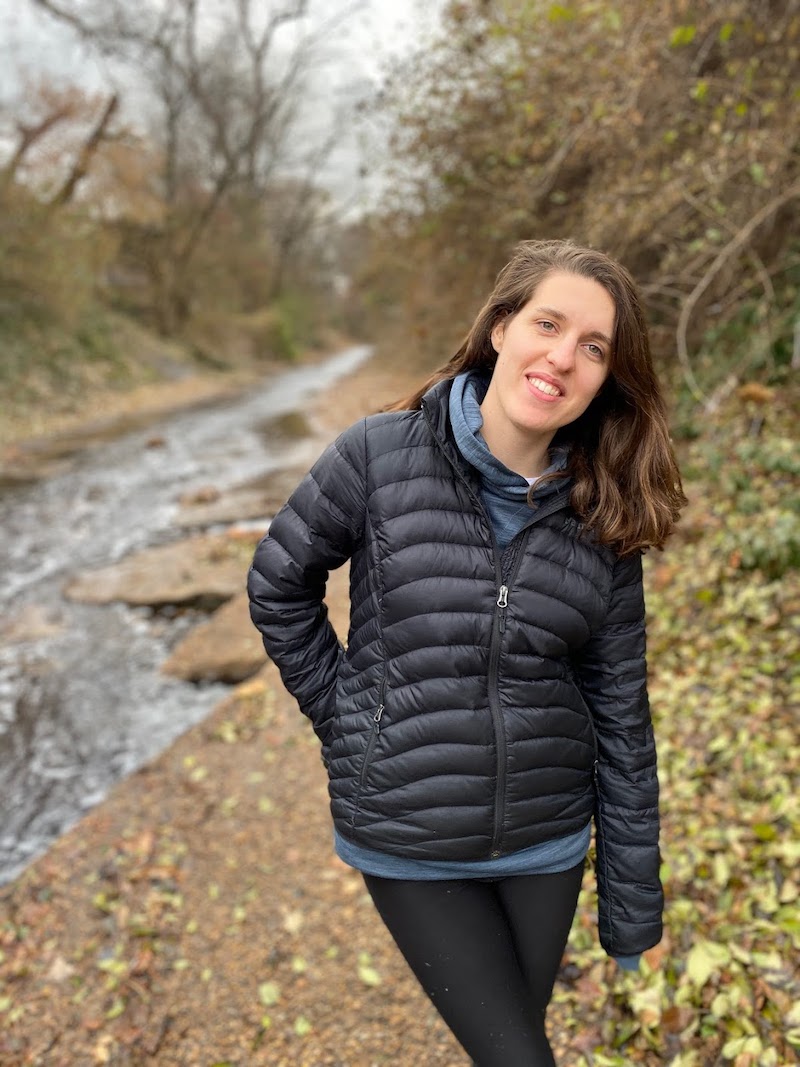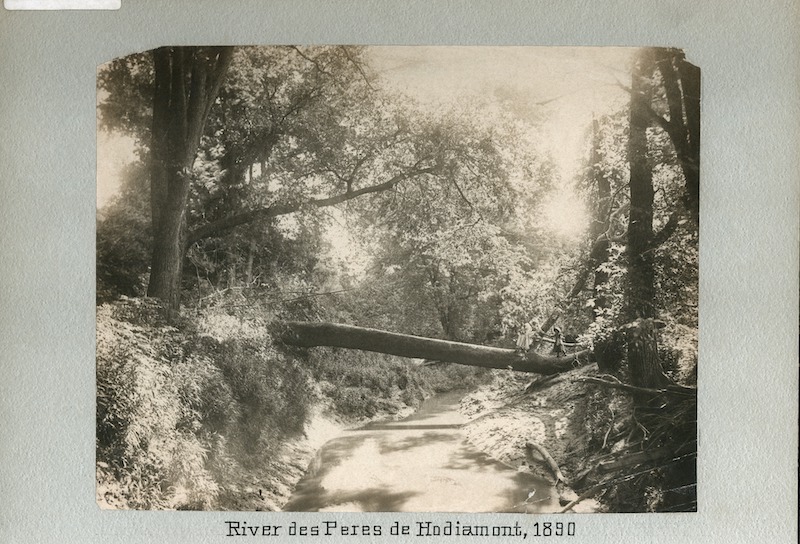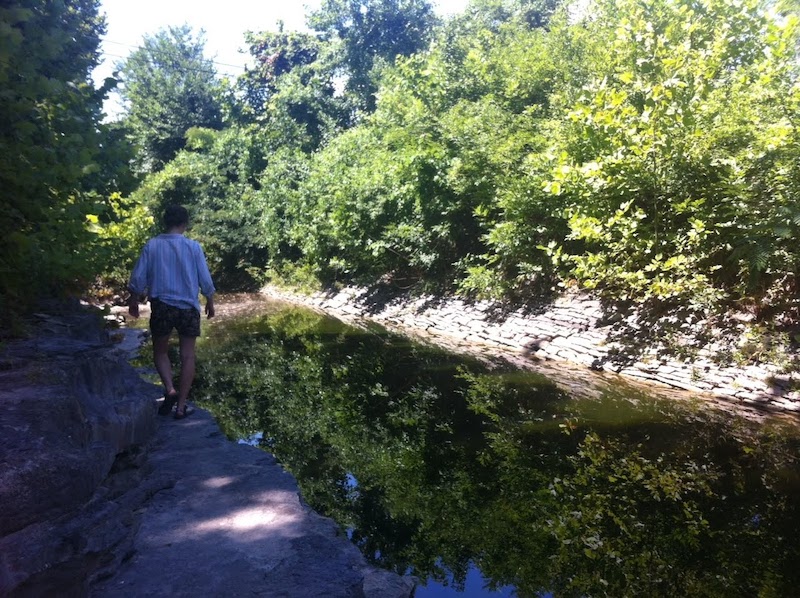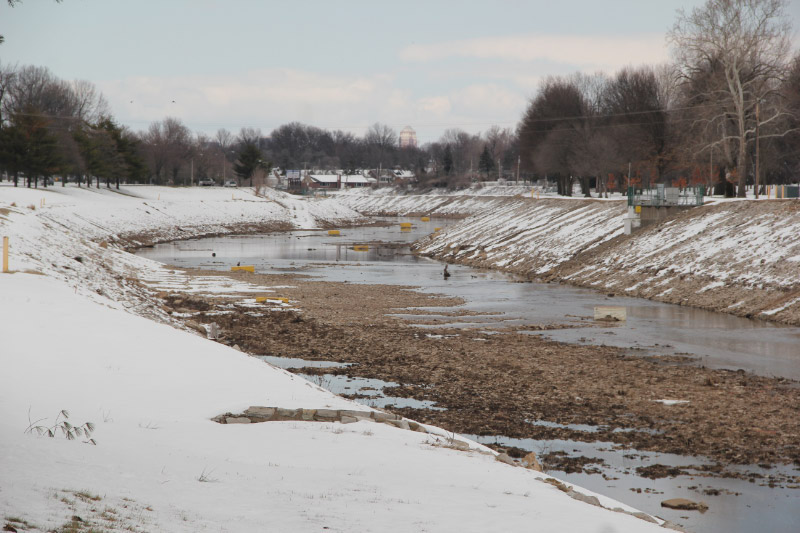Senior Marina Henke Writes a Biography of a Blighted River in a Beloved City
By Rebecca GoldfineFrom the moment she arrived at Bowdoin, Marina Henke ’19 has customized her educational path to pursue her fascination with her home city of St. Louis, Missouri.

"Since high school, I have had a growing obsession with the city and its history," Henke said in a recent interview. She traces the origins of her interest back to the 2014 police shooting of Michael Brown, and the subsequent protests in nearby Ferguson. "That year I saw tension in St. Louis that out of naiveté I had not fully recognized before."
As an Africana studies and environmental studies coordinate major, Henke has taken a unique approach to examining St. Louis, particularly its racial and economic divisions. In several of her research projects for classes, she has focused on landmarks—a boulevard, a river—that not only physically segment the city, but also demarcate and emphasize its social and economic divides.
For instance, in environmental studies Professor Eileen Johnson's course, Building Resilient Communities: GIS and Remote Sensing, Henke looked at how a prominent St. Louis street, Delmar Boulevard, draws a line between rich and poor, and black and white neighborhoods. Using GIS, she created a map of cultural amenities on either side of the boulevard to show how the city's less affluent northern areas have fewer art centers, schools, libraries, and health centers.
Now as she nears graduation (Henke took a year off from Bowdoin), she is culminating her multi-year study of St. Louis with an honors project about a small urban river, the River des Peres. The 9.3-mile river, sometimes nicknamed the River Despair, is not actually a river—it's more a creek-sized tributary that flows into the Mississippi, carrying most of the city's wastewater.
Smelly, "gross," and often choked with litter, the river "was conventionally beautiful once," Henke said. But as the city's population boomed in the nineteenth century, it became a de facto sewer. Then, in the 1930s, at the height of the Great Depression, the river was officially converted into what was at the time considered a marvel of sewer engineering. Parts of the river bottom were laid with concrete, and four miles of the stream were directed underground through a large tunnel, to mask the rank and fetid water from more upscale parts of town and lessen flooding risk.
After researching the history of the river and exploring what it has meant to people in St. Louis over time, Henke is working on not just an environmental history, but also a biography of sorts—one that illuminates complexities about the city, its past, and its people.
"Current academic writing of the des Peres only exists in the local perspective: detailed histories, intricate timelines," Henke said. "What if we were to pull beyond it and use this polluted river as a way to look at people and place?"
"What I am trying to do in my project is go beyond some one-dimensional story of the river being ruined or destroyed. I want to show how people relate to it now, whether they understand it as a natural thing or an unnatural thing," she added. In addition to scouring archives, she has also collected oral histories from people ranging in age from ten to eighty who live near to or along the waterway.
Calling her honors thesis an untraditional form of writing, Henke said, "I have this lofty goal of writing a piece that doesn't just appeal to a local historian in St. Louis. Instead I want to write a piece that can speak to people well beyond the city."
"The way I see it everyone lives near a place like the des Peres, that isn’t there to just be beautiful, that isn’t going anywhere, that maybe shouldn’t be there in the first place. Ultimately, we all make a choice in how we interact with these spaces. I think that showing these different paths end up showing us a lot about where we live."
She is also including her own accounts of visiting the river over this past year, when she has observed starving deer and flooded banks. As a child, she participated alongside her mother in local clean-ups of the des Peres.
Henke's advisor, history and environmental studies professor Connie Chiang, praised Henke's treatment of the river in her thesis. "Like many other landscapes, the River Des Peres has been altered and manipulated by humans for decades and could easily be viewed as a degraded place beyond redemption," Chiang said.
"But Marina brings great sensitivity, maturity, and wisdom to her analysis. The river emerges as a thoroughly complex place invested with different ideals and values that shifted over time....Marina has constructed a stunningly beautiful narrative of a place that deserves to be cherished and valued. It resonates with many similar places around the world."






